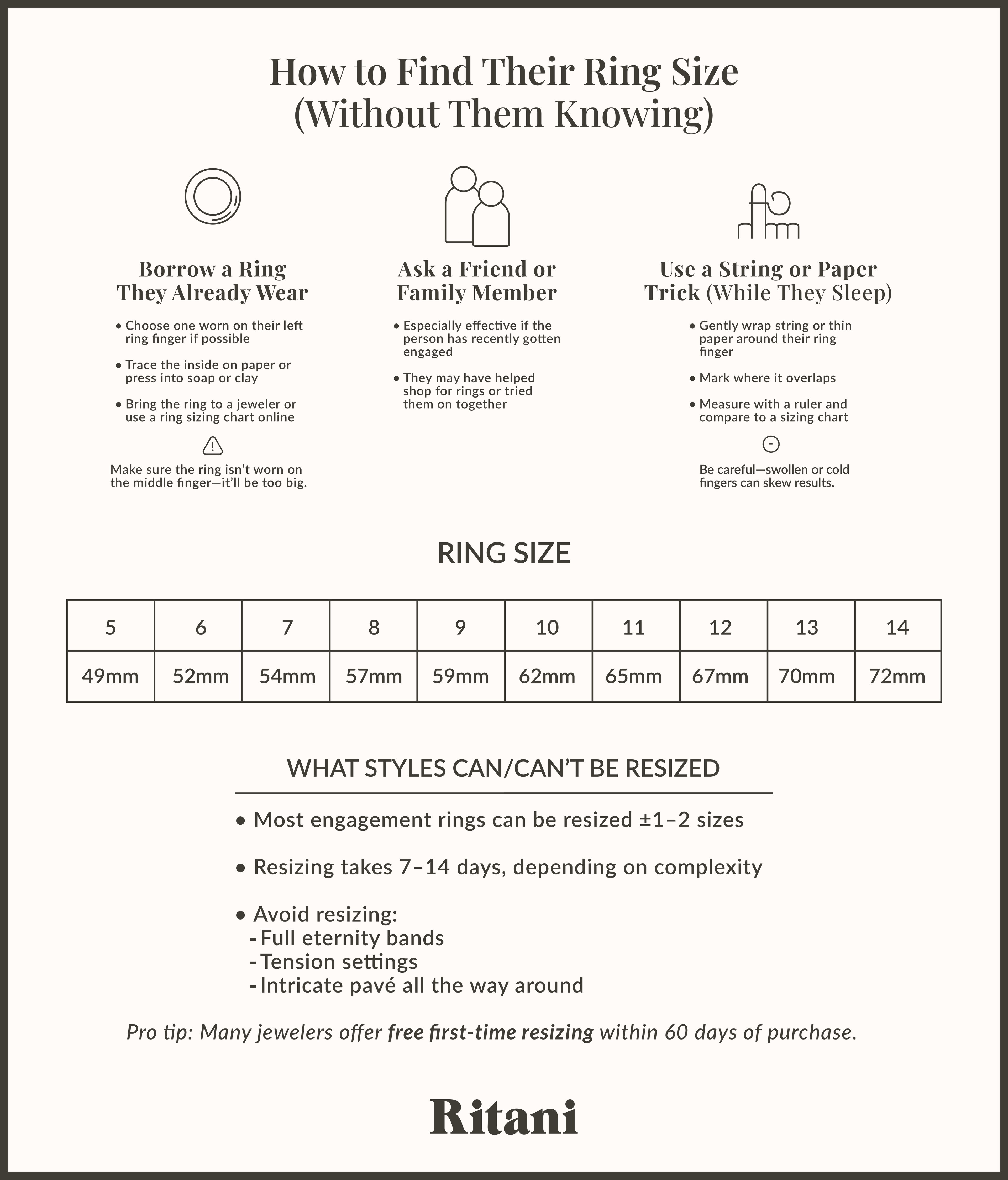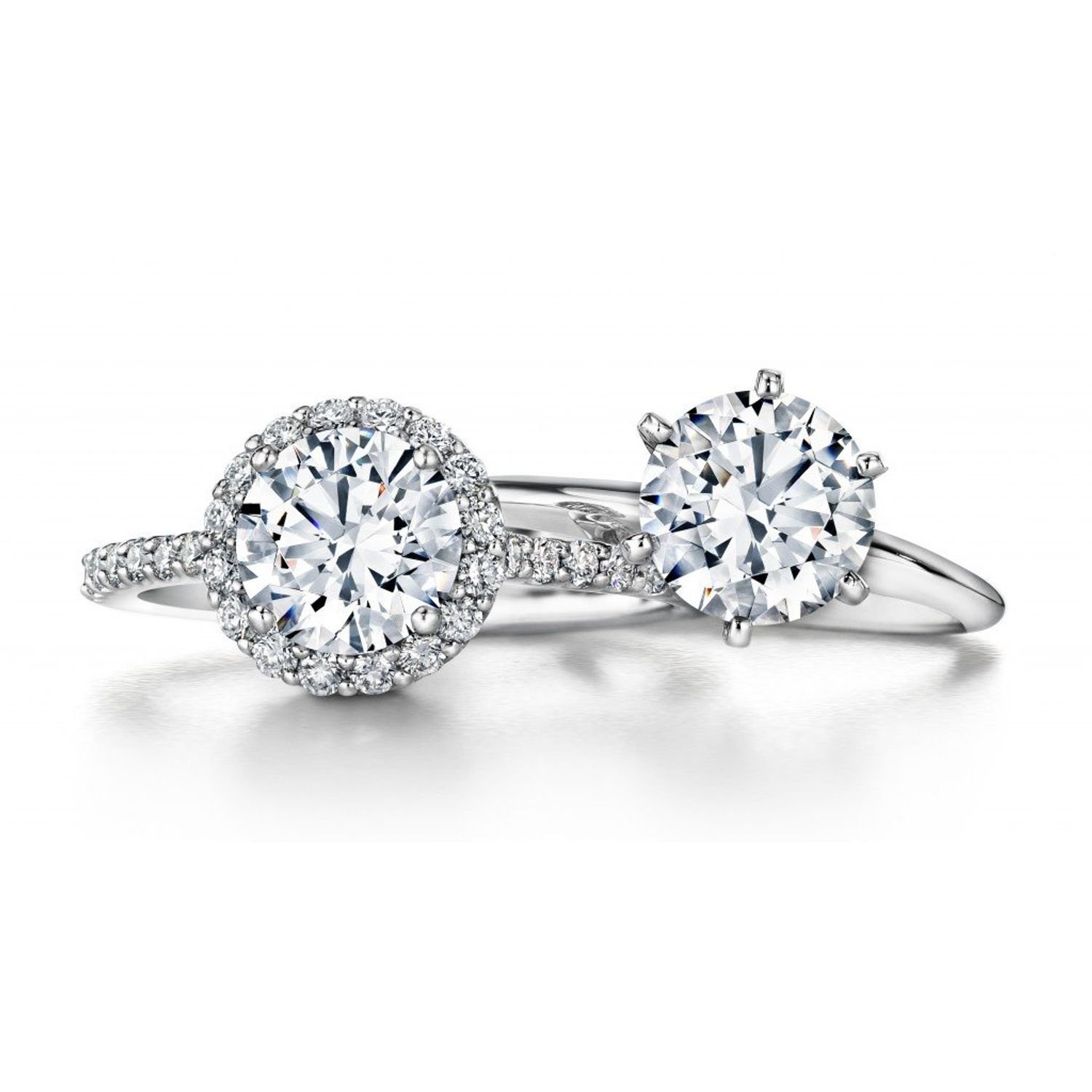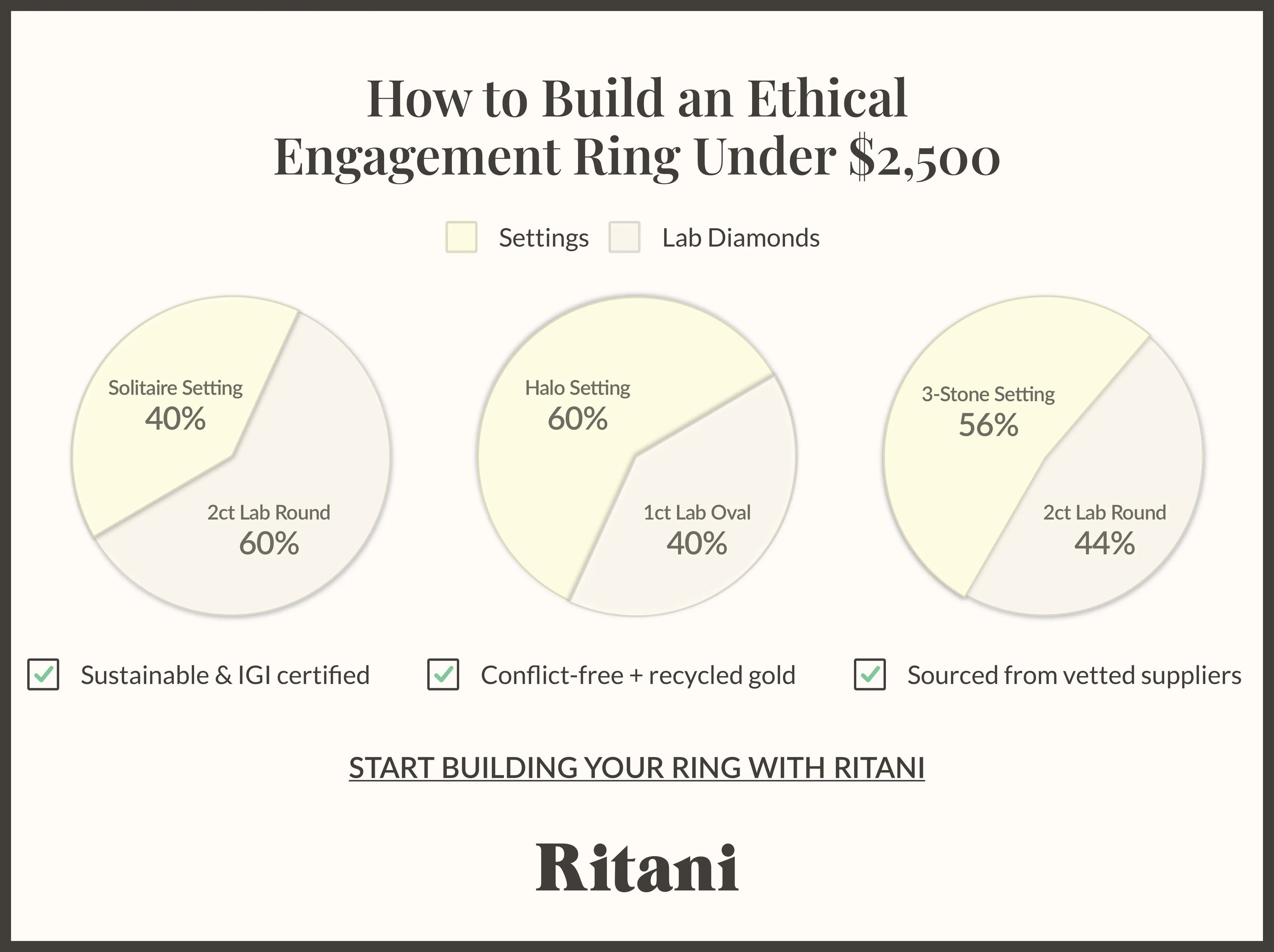How to Buy a Heart-Shaped Diamond Ring
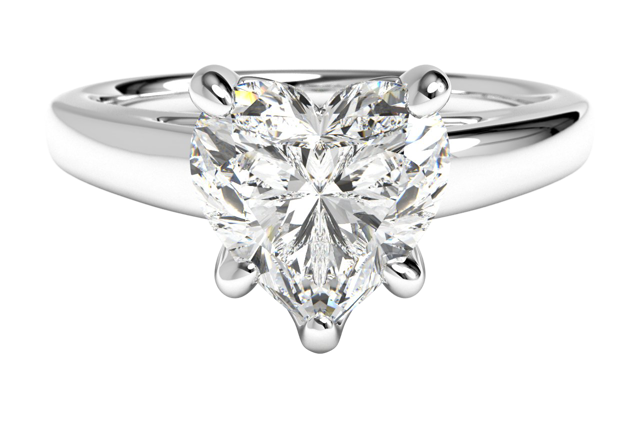
Hearts are one of the most popular symbols representing the concept of pure heartfelt love. The heart shape symbolizes the real human heart, conveying everlasting devotion, commitment, and romance between two people. Romantic feelings are often expressed with heart emojis, heart chocolate, and other affectionate heart tokens for Valentine’s Day, birthdays, anniversaries, holidays, or as a breathtaking surprise.
A heart diamond engagement ring or diamond heart promise ring will be appreciated and cherished as an heirloom keepsake and passed down to generations because of its poignant meaning and striking style, unlike any other shape. Choosing a 1-carat heart-shaped diamond ring is a timeless option, perfect for those who love a classic style.
The following blog post will serve as a heart diamond ring purchasing guide. There are endless mountings, different settings, sizes, and other factors to choose from when shopping for your special treasure. This easy-to-read information will help narrow down your chosen style and find the ring perfect for your loved one.
The 4Cs: Making it Easy to Find Your Perfect Heart Diamond
The 4Cs is a scale for white diamonds developed by the Gemological Institute of America (GIA). Diamonds are evaluated according to four factors. These factors include color, clarity, cut, and caratage. (fancy color diamonds are graded differently, such as pink, yellow, blue, etc.).
There may be many other European methods for grading diamonds or various methods developed by independent laboratories. However, the 4Cs remain the most universally recognized method for grading diamonds; it is globally acknowledged as the standard for diamond grading. According to the GIA website, diamond quality is communicated in a universal language when the diamonds are graded using the 4Cs as a valuation.
You will frequently see these factors as part of the jewelry or diamond description when jewelry is for sale. These quality factors may be listed on the website as part of the description, on a certificate of authenticity accompanying the ring, or on the item’s tag connected to the ring.
Buying Suggestion: Inquiring about the 4Cs is an important part of the purchasing process. It will help clarify what type of diamond you are buying. In turn, you will be well acquainted with your new diamond purchase and get the maximum value for your budget.
No two diamonds are quite the same - they are all unique.
Here is a brief explanation of the 4C’s Diamond Quality:
1. CUT
The cut describes the dimensions of the proportions of the diamond. The cut of the diamond displays its fire, sparkle, and brilliance. This includes the brightness (total light reflected from the diamond), fire (colored light dispersion), and scintillation (flashes of light or the sparkle of the diamond in movement).
This includes:
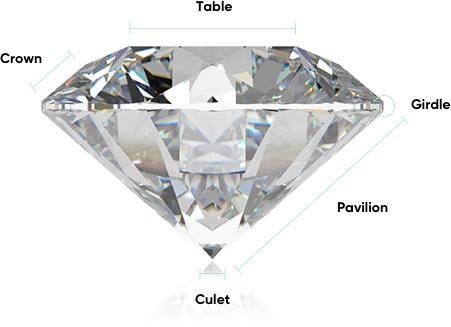
-
TABLE: The top part of the stone. Old fashioned cuts (rose or mine cut) may have a smaller table than modern cuts.
- GIRDLE: The part when the table intersects with the pavilion or the lower half of the cut. The girdle is the circumference of the diamond.
- CROWN: The top part of the cut extends from the girdle to the table. The crown will appear slightly slanted or at an angle.
- PAVILION: The lower part of the diamond. Heart-shaped diamonds may have shallow or deep pavilions depending on the cut.
- CULET: The point or facet at the bottom of the diamond.
The depth of the diamond is measured from the culet to the table.

Weight ratio, durability, polish, and symmetry reference how well the diamond is cut. These factors determine the diamond’s design and craftsmanship (GIA).
You may notice that a diamond is cut unevenly or may not be symmetrical, clearly noticeable even to those getting started on their diamond education. This is an example of a poorly cut stone. These inconsistencies will affect the sparkle and durability. The diamond may even come loose from the setting because of its skewed dimensions.
Buying Suggestion: Choose a heart-shaped diamond with Excellent symmetry. A heart-shaped diamond that is not symmetrical will be very obvious.
2. COLOR
The color refers to the color grade of the diamond. The grade ranges from D to Z.
Interesting fact: GIA wanted to create their own GIA scale, different from other methods used prior, so the founders decided to start with D.
The color is divided into different categories:
● D-F (colorless), most expensive
● G-H (near colorless), excellent value
● I-J (near colorless), very common and great value
● K-M (faint color)
● N-R (very faint color)
● S-Z (light color)
Buying Suggestion: It is not necessary to have a D-F color diamond for the diamond to be beautiful! The other color grades make a fantastic selection to purchase. G through J color diamonds are common and popular, making them a great choice for a center stone. The very slight color may not be apparent to the untrained eye for color grades of K-M, allowing you to choose a larger diamond at a fraction of the cost. Actress Catherine Zeta-Jones has a large K-color diamond engagement ring.
3. CLARITY
Clarity refers to the internal and external blemishes of the stone. Because diamonds form under tremendous pressure and heat, these growth characteristics affect the diamond’s clarity.
The GIA clarity scale has 6 categories. These categories help determine the clarity of the diamond. They are as follows:
● FLAWLESS (FL): No inclusions or blemishes under 10x magnification. Very rare
● INTERNALLY FLAWLESS (IF): No inclusions visible under 10x magnification
● VERY, VERY SLIGHTLY INCLUDED (VVS1-VVS2): Very slight blemishes difficult to spot under magnification
● VERY SLIGHTLY INCLUDED (VS1-VS2): Inclusions can be seen under 10x magnification but do not affect the stone’s beauty
● SLIGHTLY INCLUDED (SI1-SI2): Inclusions readily apparent under 10x magnification
● INCLUDED (I1-I2-I3): Inclusions are obvious under 10x magnification and may also be seen with the naked eye. Ritani does not carry I1, I2, or I3 diamonds.
4. CARAT WEIGHT
The carat of the diamond refers to the weight of the diamond, not the dimensions or size. A diamond may look larger because they have a larger table, for example. This may not necessarily mean they have a larger carat weight than something that may appear as smaller. The smaller-looking stone may have a deeper pavilion (bottom half).
Length to Width Ratios
The length-to-width ratio of your heart-cut diamond will affect its appearance.

You can easily calculate a diamond's length to width ratio by dividing its length by its width. The ideal length to width ratio is 1.00, but you should choose whichever one you find the most aesthetically pleasing.
Settings & Mountings
The heart shape consists of a double scalloped ideogram with a V-shaped base (Art and Object). The top of the heart has two even half-circles tapering into a point at the bottom.
Heart-shaped diamonds and other stones commonly feature an asymmetrical five-prong setting.

Four prongs are evenly placed on the sides of the smooth, scalloped half-moons on the top. A V-shaped prong is placed on the base, protecting the delicate point of the diamond from being knocked, cracked, broken, or damaged. Not only does this three-prong setting keep the diamond secure, but it also allows all the fire and scintillation possible for the diamond. The prongs are elegantly placed in certain areas that are unique to this dazzling shape.
Why are heart diamond rings so popular?
Fancy cut heart diamonds are readily available on the market. However, they are considerably less common than other cuts selected for engagement and anniversary rings. Standard cuts such as round (most popular), and fancy cuts like princess/square, and cushion are frequently seen as an engagement ring selection.
Buying Suggestion: Why not purchase a diamond heart ring in white gold? Gorgeous heart solitaire rings in luscious fine metals, milgrain/beaded detailing, diamond-cut patterns, raised basket mountings, sparkling stone accents, and even precious colorful gems for vibrant side stones give this shape an enchanting presence.
Are Diamond Heart Shaped Rings Tacky?
Diamond heart rings in white gold are one of the most glamorous choices for an engagement ring. Rose gold heart diamond rings present an enchanting vintage-style elegance that will complement any skin tone. A 3-carat heart-shaped diamond ring is sure to make a statement in style, ideally suited for those who want a big bold look.
Heart diamond rings remain popular because they are so captivating. They are also very wearable and easy to mix and match with wedding bands and other jewelry, especially heart jewelry for a matching set. Selecting a heart-shaped ring makes you stand out from the crowd in sophisticated glamour, instantly recognizable as a symbol of endearment and commitment.
Shop Heart-Shaped Diamond Engagement Rings
